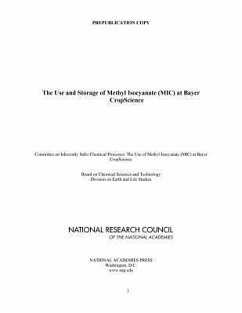The use of hazardous chemicals such as methyl isocyanate can be a significant concern to the residents of communities adjacent to chemical facilities, but is often an integral part of the chemical manufacturing process. In order to ensure that chemical manufacturing takes place in a manner that is safe for workers, members of the local community, and the environment, the philosophy of inherently safer processing can be used to identify opportunities to eliminate or reduce the hazards associated with chemical processing. However, the concepts of inherently safer process analysis have not yet been adopted in all chemical manufacturing plants. The Use and Storage of Methyl Isocyanate (MIC) at Bayer CropScience presents a possible framework to help plant managers choose between alternative processing options-considering factors such as environmental impact and product yield as well as safety- to develop a chemical manufacturing system. In 2008, an explosion at the Bayer CropScience chemical production plant in Institute, West Virginia, resulted in the deaths of two employees, a fire within the production unit, and extensive damage to nearby structures. The accident drew renewed attention to the fact that the Bayer facility manufactured and stores methyl isocyanate, or MIC - a volatile, highly toxic chemical used in the production of carbamate pesticides and the agent responsible for thousands of death in Bhopal, India, in 1984. In the Institute accident, debris from the blast hit the shield surrounding a MIC storage tank, and although the container was not damaged, an investigation by the U.S. Chemical Safety and Hazard Investigation Board found that the debris could have struck a relief valve vent pipe and cause the release of MIC to the atmosphere. The Board's investigation also highlighted a number of weaknesses in the Bayer facility's emergency response systems. In light of these concerns, the Board requested the National Research Council convene a committee of independent experts to write a report that examines the use and storage of MIC at the Bayer facility. The Use and Storage of Methyl Isocyanate (MIC) at Bayer CropScience also evaluates the analyses on alternative production methods for MIC and carbamate pesticides preformed by Bayer and the previous owners of the facility.
Bitte wählen Sie Ihr Anliegen aus.
Rechnungen
Retourenschein anfordern
Bestellstatus
Storno








